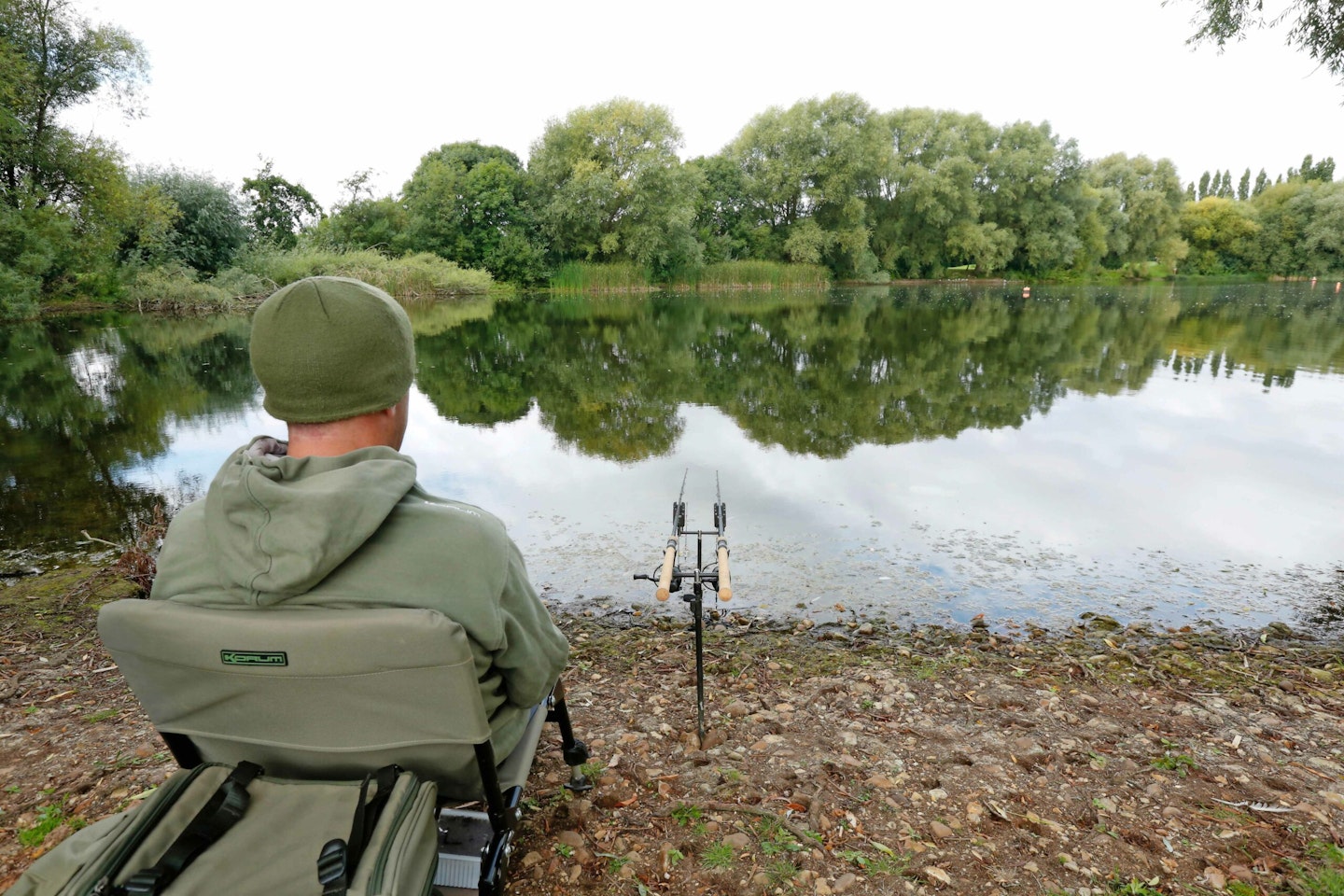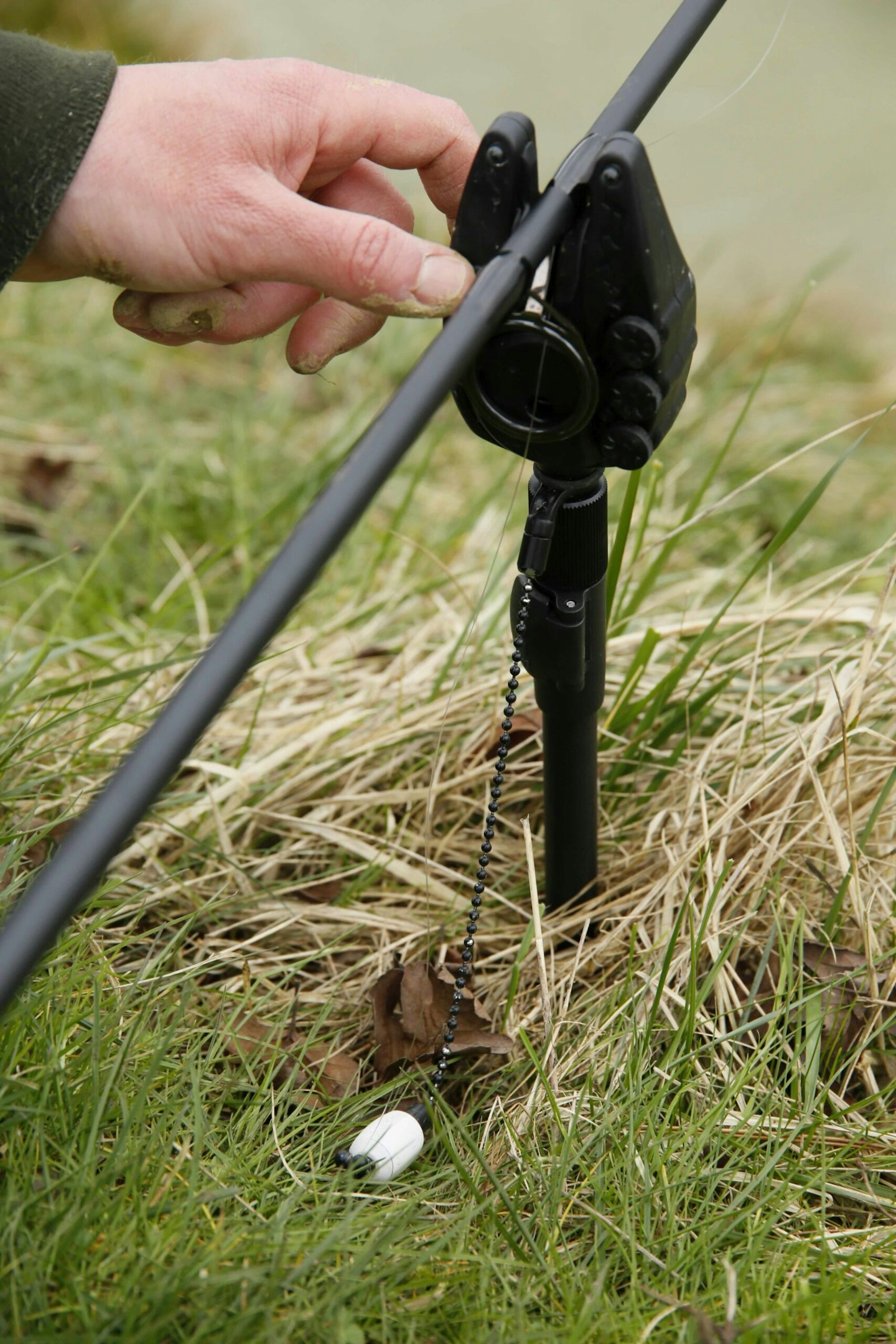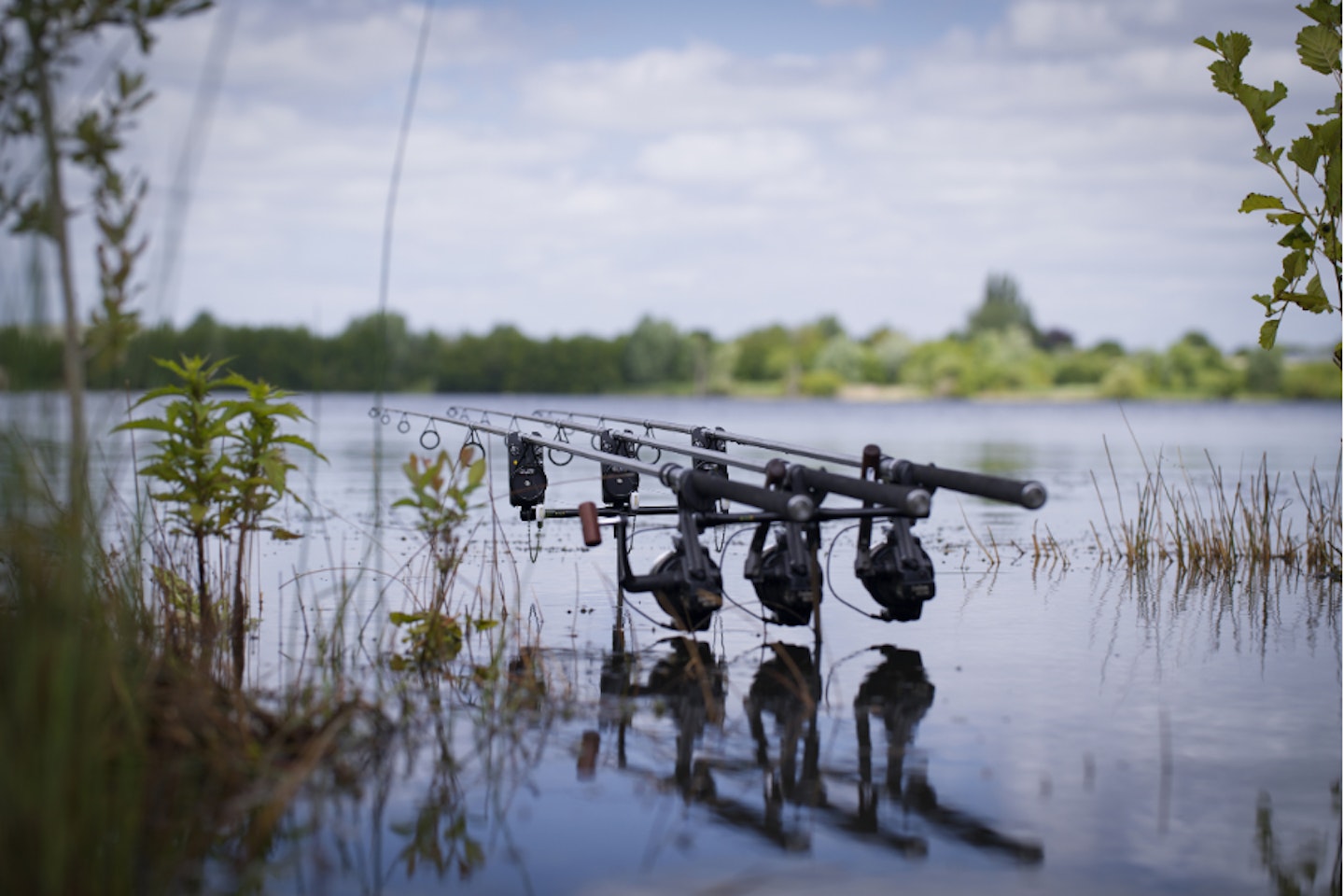A fishing bite alarm is an indispensable tool for bite indication, particularly when targeting elusive species that require time and patience, particularly when fishing into darkness and overnight. By following the steps in this guide will ensure that you can get the best out of your set up.
CONSIDERING A BITE ALARM? THEN CHECK OUT OUR GUIDE TO THE BEST BITE ALARMS

Setting up a bite alarm(s)
Step 1: Set up your rod pod or banksticks
First, position your rod pod or banksticks in your desired location. Make sure they are stable and secure.
Step 2: Attach a bobbin or swinger
A bobbin or swinger is essential for a bite alarm to work effectively. It provides the necessary resistance to trigger the alarm when a fish takes your bait. To attach the bobbin or swinger to your bankstick, push the attachment onto the screw thread of your alarm and then into the bankstick to secure it.
THE BEST BITE ALARM BOBBINS WILL GET THE BEST OUT OF YOUR BITE ALARM.

Step 3: Position your alarm
Place your alarm in a position where you can easily access the buttons, also ensuring it can securely hold your rod. The optimal position will be facing toward the spot you are fishing with the controls of the bite alarm facing the bank.
Step 4: Attach your rod and set the tension
Cast your rig and tighten the line, placing your rod into the alarm and secure it. Once in position, attach your bobbin or swinger to the line, while adjusting the tension on the line to ensure the bobbin or swinger moves freely but doesn't swing too much in the wind. The use of a freespool reel or slacken off the drag to allow for fine adjustments.

Step 5: Power on and adjust settings
Switch on the alarm, every alarm, budget or premium will have an on/off switch. Depending on the model, you may be able to adjust settings like volume, tone, and sensitivity. Sensitivity is particularly important in windy conditions or rain, as it can help reduce false indications.
STRUGGLING TO HEAR YOUR BITE ALARMS? THEN THE BEST BITE ALARMS WITH RECEIVERS WILL ENSURE YOU HEAR EVERY TAKE.

Additional tips
Consider the environment: Adjust sensitivity based on factors like wind and water movement.
Utilise tone and volume: Customise these settings to distinguish your alarm from others.
Invest in a receiver: A receiver allows you to carry with you if you have a call of nature or to have with you inside your bivvy so you can hear the alarms.
